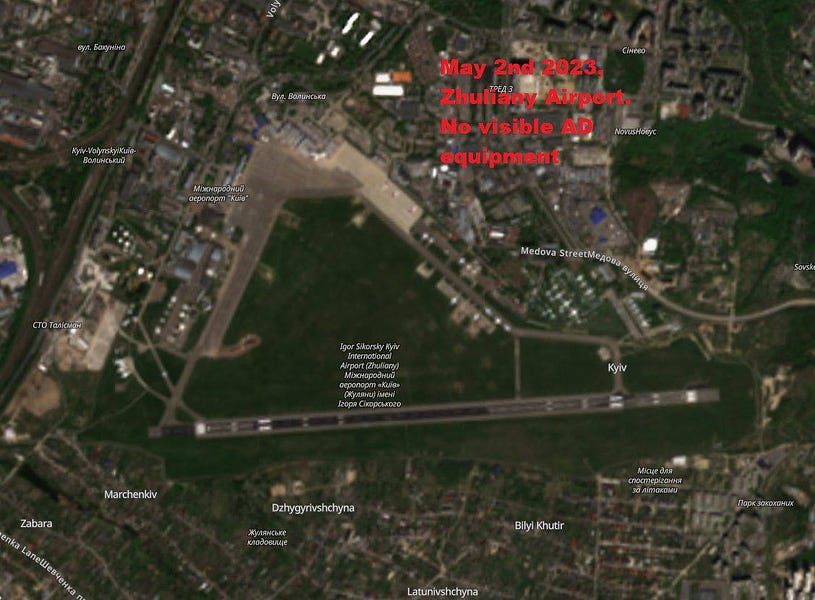Deplorable Yankee
Diamond Member
Let’s break down in depth exactly what happened on the night of the Patriot attack and catch up on the known facts and speculations. Here’s what is known so far:
Russia was said to have conducted a layered, multi-vectored attack which came from various sides including north, east, and south, which included both Geran drones as screening cover, Kalibr missiles, Kh-101s, and finally the Kinzhals. The attack also likely included other cheaper types of drones as decoys to saturate the air defense, and in fact Kiev does attest to that, as in their official ‘shoot down’ graphic they include several drones they comically ID’d as Orlan ‘Supercum’ which was later changed to ‘Supercam’.
First, let’s break down how such an attack happens. Most logically, the cheaper decoy drones are sent in first to see if they can bait out any of the air defense into opening up on them. Kiev would try to use only its less important SHORAD (Short Range AD) systems against them, such as German Gepards and any Tunguskas/Shilkas and such that they might have.
Long
Keep reading

 simplicius76.substack.com
simplicius76.substack.com
Don't worry about the carriers though
They'll just swerve outta the way or deploy their impenetrable rainbow shields of demockwacy
Russia was said to have conducted a layered, multi-vectored attack which came from various sides including north, east, and south, which included both Geran drones as screening cover, Kalibr missiles, Kh-101s, and finally the Kinzhals. The attack also likely included other cheaper types of drones as decoys to saturate the air defense, and in fact Kiev does attest to that, as in their official ‘shoot down’ graphic they include several drones they comically ID’d as Orlan ‘Supercum’ which was later changed to ‘Supercam’.
First, let’s break down how such an attack happens. Most logically, the cheaper decoy drones are sent in first to see if they can bait out any of the air defense into opening up on them. Kiev would try to use only its less important SHORAD (Short Range AD) systems against them, such as German Gepards and any Tunguskas/Shilkas and such that they might have.
Long
Keep reading

Anatomy of MIM-104 Patriot Destruction + Primer on Kh-47M2 Kinzhal Hypersonic Missile
Let’s break down in depth exactly what happened on the night of the Patriot attack and catch up on the known facts and speculations. Here’s what is known so far: Russia was said to have conducted a layered, multi-vectored attack which came from various sides including north, east, and south...
Don't worry about the carriers though
They'll just swerve outta the way or deploy their impenetrable rainbow shields of demockwacy